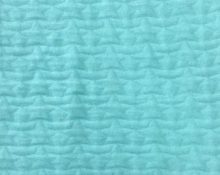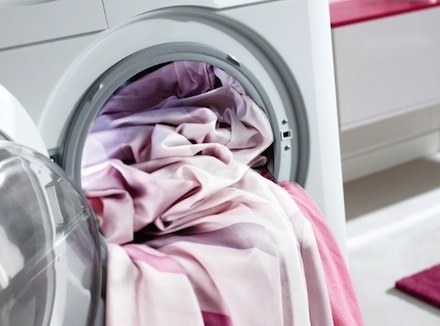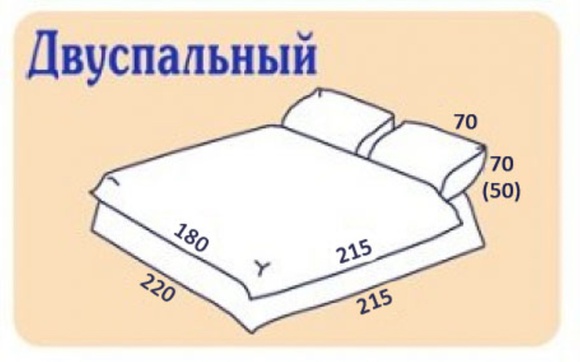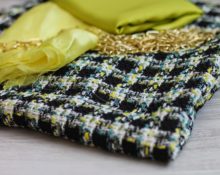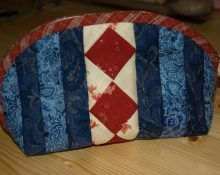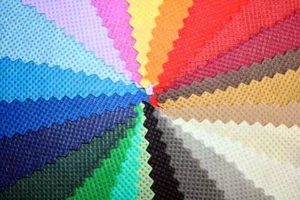
prom.ua
What is non-woven fabric for sewing - it is a lining fabric that is used in sewing to strengthen the parts of the product. This is a special paper-like material that is placed between the fabric and the lining. It can be permanent, which remains in the product forever, helping it to avoid deformation, giving it rigidity and a presentable appearance.
Non-woven fabric can also be auxiliary - it is used when embroidering various patterns on a machine. They embroidered it, rinsed it with water and it dissolved, leaving a dense, beautiful pattern on the fabric.
What is non-woven fabric for medicine? It is used as a dressing material. Non-woven fabric is a godsend for the construction industry. It is used in finishing works and the production of finishing materials.
The name of the fabric comes from the name of the German brand Vlieseline. This non-woven fabric has firmly entered our lives due to its ease of use, low cost and environmental friendliness.
More often, interlining is produced in white, milky, gray and black colors, but sometimes you can also find colored interlining. It is used for thin and transparent colored products, and the tone is selected to match the color of the material.
Depending on whether the cushioning fabric is glued with an adhesive composition or not, it is divided into 3 groups:
- Non-woven fabric adhesive - consists of a sheet of cellulose fibers on which a layer of glue is applied. The glue can be applied spotwise or cover the fabric completely. For lighter fabrics, non-woven fabrics with spot application of glue are used.
- For outerwear, to give rigidity and density - non-woven fabric with a continuous adhesive layer.
- Adhesive bulk interlining is another type of adhesive interlining. In appearance it resembles a padding polyester. Just as thick and voluminous. It is quilted and used for sewing wallets, bags and other things.
- Tape interlining "formband" is also an adhesive interlining for sewing. It is a thin ribbon, 12 mm wide, stitched in the middle with a chain stitch. With its help, the sections of cut products are strengthened (neck, armholes, bottom of the product).
- Double-sided non-woven web - very light, almost transparent, with adhesive applied on both sides. Used for light fabrics. With its help, you can easily hem the bottom of a dress or trousers, glue an applique, etc. You just need to apply it to the fabric, not taking into account the allowance, fold the main fabric and iron it with an iron.
- Non-woven adhesive, how to use it in work - place it on the wrong side of the fabric with the adhesive side down and iron it with an iron.
- Non-adhesive interlining, what and how is it used? It consists simply of cushioning material, without being coated with adhesives.This type of fabric is divided into dissolving and tear-off. Both types do not permanently remain on the product, but are removed after the desired operation is completed. Most often, this type of non-woven fabric is used in needlework and embroidery. When embroidering with it, the pattern turns out to be denser and smoother, the fabric does not wrinkle and the work turns out very neat. After completion, the gasket is removed or it dissolves on its own.
- Thread-stitched interlining - interlining material is stitched along the edge of the fabric, which adds strength to the material and eliminates creases.
Composition of non-woven fabric
Non-woven non-woven material, what is it - this material, like paper, is made from artificial cellulose fibers, but polyester and other synthetic components are added to the main composition. This is done to increase the strength characteristics of the material, elasticity and rigidity. Non-woven fabric, the composition of which is described, is considered semi-synthetic.
How to glue non-woven fabric with adhesive backing
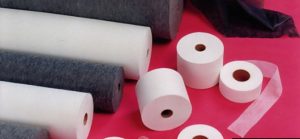
prom.ua
- Cut out from non-woven fabric a copy of the cut part of the product that you want to strengthen, not forgetting the seam allowances. The adhesive layer of the interlining fabric should lie on the wrong side of the main fabric.
- Bring the iron temperature to 130o.
- Disable steam function.
- Iron through an additional layer of fine fabric.
- Press the iron onto the surface and hold for 10 seconds. Move further. Do this until you cover the entire surface.
- Set the part aside for half an hour. The glue will set completely only when it cools completely. Use scissors to straighten the edge.
Using adhesive-based non-woven fabric, you can also perform minor clothing repairs. If the fabric is torn somewhere, apply a strip of adhesive interlining on the wrong side and press it with an iron.The fabric will “grow together” again and will be like new.
Non-woven fabric: what is it and what types does it come in?
Every fashion magazine with patterns always specifies what type of interlining to use in sewing. The general rules are:
- For light summer fabrics, a thin non-woven fabric - H180 - is suitable. Temperature for gluing is 130–150°C.
- Cotton fabrics need to be sized with H200. It is thin, but can strengthen the product well. t = 130–150°C.
- For trousers, wool and thick cotton - H410 and G405 are suitable. It is flexible, with stabilizing threads and can even be used on velor or flannel. t = 130–150°C with humidification.
- It is better to strengthen linen fabric with F220. This type of non-woven fabric will not lose its qualities when boiled.
- It is recommended to use E420 in leather and suede; non-woven fabric is strong and dense. Gluing temperature is 60–85°C.
Now let's try to figure it out, non-woven fabric - what kind of material it is and what it is advantages:
- Cheapness.
- Very easy to use.
- A variety of gasket materials makes it easy to solve many problems. With their help, fabric is strengthened, duplication is performed, clothing is insulated, the wear resistance of the material is increased, and minor repairs are made to products. An irreplaceable material in needlework and embroidery.
Non-woven fabric, what it is and what it is flaws he has:
- thin material is fragile and tears like paper, and strong material is too dense;
- susceptibility to various deformations;
- The non-woven lining must be covered with a lining, otherwise it will quickly become unusable.
Non-woven fabric is a material without the use of which not a single product can be sewn. When purchasing a ready-made coat or other type of clothing, we cannot even imagine how many different reinforcing elements and different gaskets are in it.Thanks to them, the product keeps its shape, does not wrinkle and has an excellent appearance. In fact, this invisible matter is simply irreplaceable in our time.


 0
0